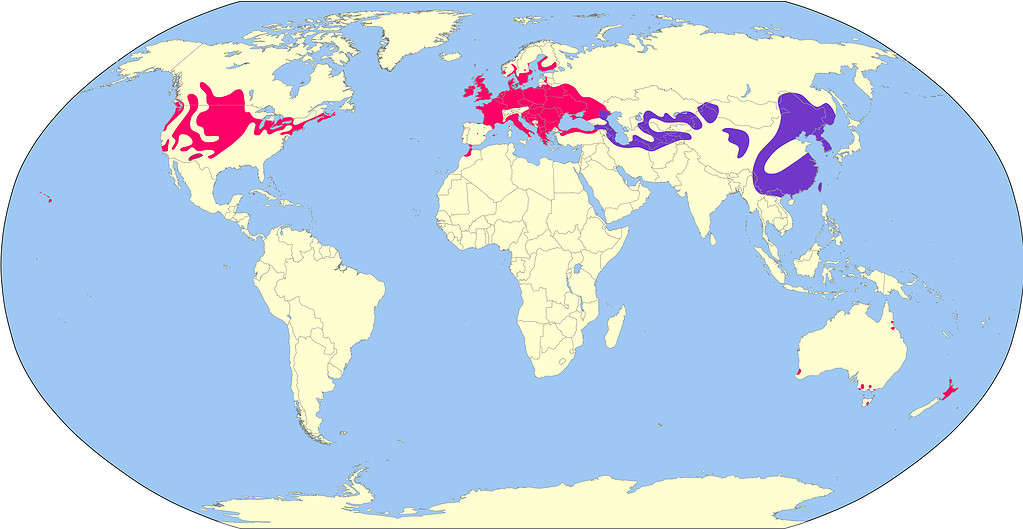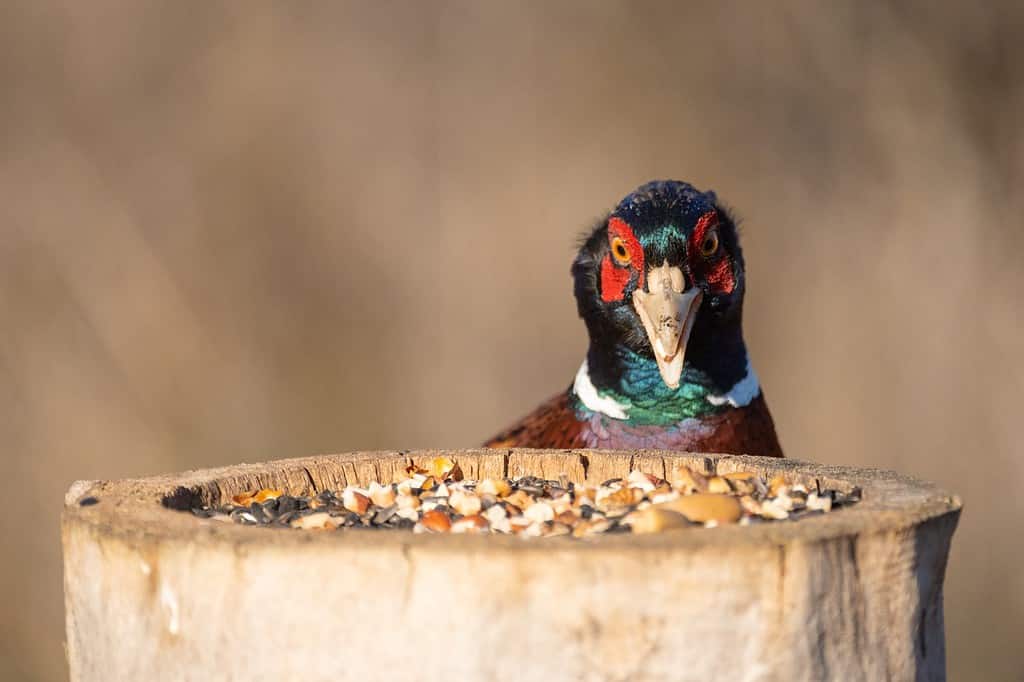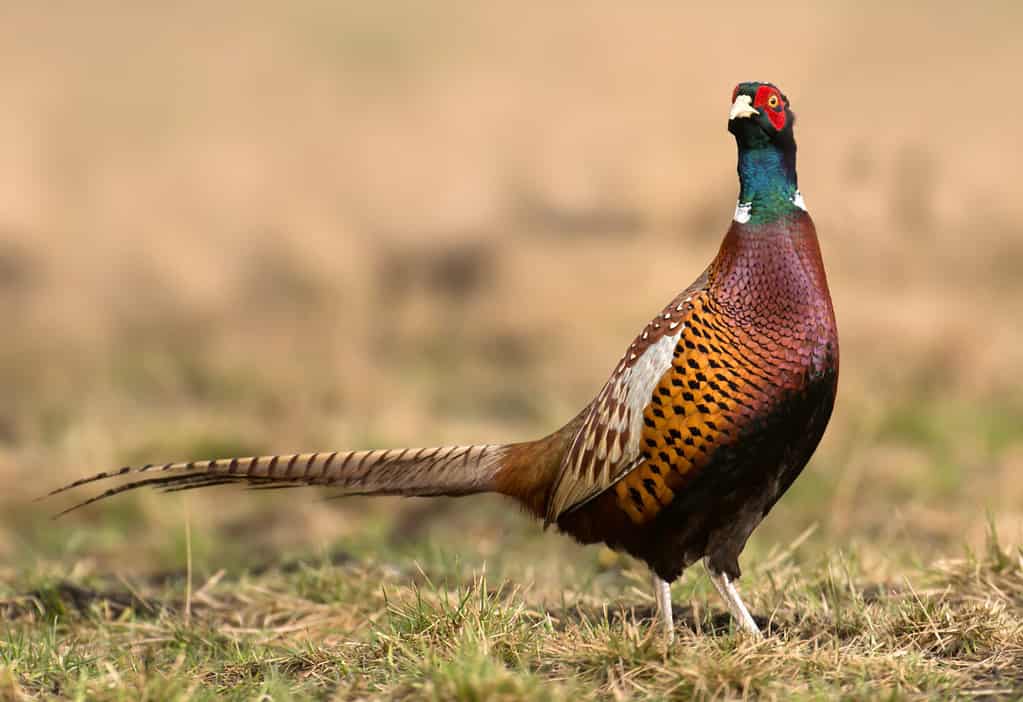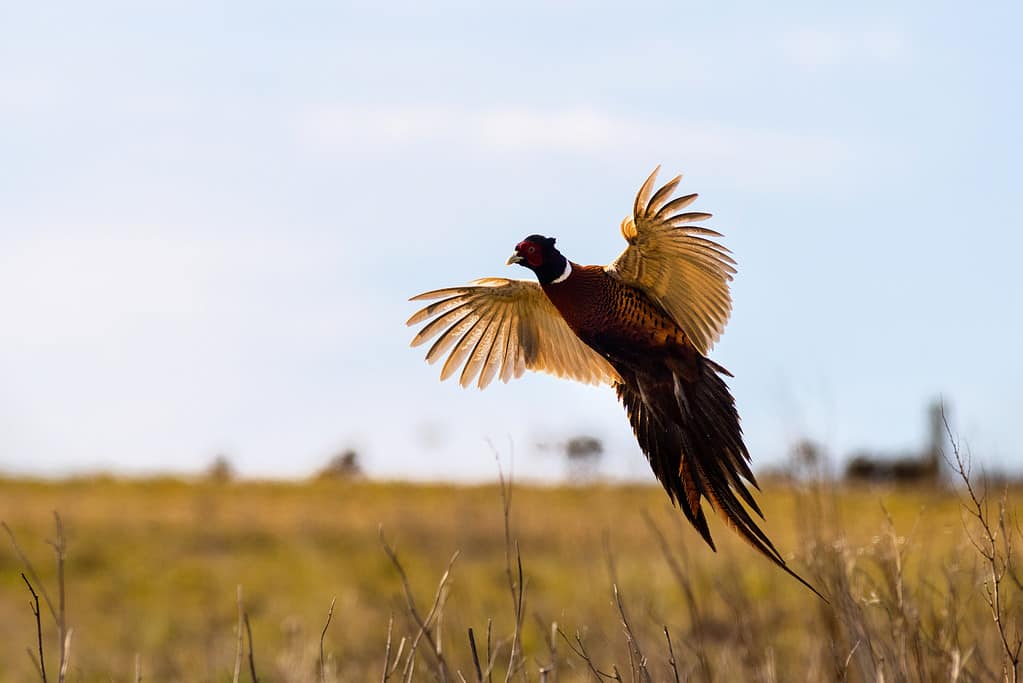South Dakota named the ring-necked pheasant (Phasianus colchicus) as its official state bird in 1943. South Dakota boasts it is “home to the best pheasant hunting in the country.” However, these popular game birds are not originally native to the state — or anywhere else in the United States!
Where Do Ring-Necked Pheasants Live?

The ring-necked pheasant is originally native to the areas in purple but has been successfully introduced to the areas in red.
Ring-necked pheasants are originally native to parts of Eurasia. However, they have been widely introduced into other areas of the world as game birds. They were likely first imported to North America in the 18th century, although successful introductions into the wild likely didn’t occur until the late 19th century. A.E. Cooper and E.L. Ebbert are credited with first introducing the species to South Dakota in 1908.
What Do Ring-Necked Pheasants Look and Sound Like?

It’s easy to tell adult male and female ring-necked pheasants apart — just look for the colorful head!
©Brian Woolman/iStock via Getty Images
Ring-necked pheasants are sexually dimorphic, with the males both larger and more colorful than females. Adult males are easily distinguished by their red faces, iridescent green neck with white collar, spotted coppery body plumage, and long tails. Adult females, in comparison, are mostly just a mottled brown and have shorter tails.
Ring-necked pheasants have a loud, rooster-like crowing call. This call can be heard from up to a mile away!
What Do Ring-Necked Pheasants Eat?

Ring-necked pheasants will visit ground seed feeders.
©WildlifeWorld/Shutterstock.com
Ring-necked pheasants are ground-foraging omnivores. Their diet includes grains, nuts, other seeds, berries, and other plant material, including grasses, leaves, roots, and shoots. They also eat a variety of small invertebrates, including insects, earthworms, and snails. They may occasionally take small vertebrate prey as well, including rodents, frogs, lizards, snakes, and small birds.
Where Can I See Ring-Necked Pheasants in South Dakota?

Ring-necked pheasants are both ground feeders and ground nesters.
©Piotr Krzeslak/Shutterstock.com
Ring-necked pheasants are non-migratory, so they are year-round residents wherever they are found, including South Dakota. They are most often found in the state’s rural and agricultural areas. These pheasants forage in a variety of upland habitats, including weedy roadsides, old fields, croplands, rangelands, brushy areas, woodland edges, and hedgerows.
Conclusion

Although ring-necked pheasants spend most of their time on the ground, they can fly and will do so if disturbed by humans or other predators.
©chris2766/iStock via Getty Images
The official state bird of South Dakota is the Ring-necked pheasant. Although originally native to Asia, it has been widely introduced to other areas of the world as a game species, including North America. The species was first introduced to South Dakota in 1908 and was declared a state symbol in 1943. These ground foragers can be spotted in the wild in rural and agricultural areas and remain popular game birds.
The photo featured at the top of this post is © Clark Warren/iStock via Getty Images
Thank you for reading! Have some feedback for us? Contact the AZ Animals editorial team.







